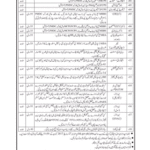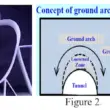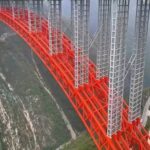Concrete being plastic material in fresh state, has to kept within an enclosure (moulds) till it gain reasonable strength, this temporary structure which has to be built for any concrete member is called “Formwork”.
Click me to read more about the Form work defintion and other defintions
 |
| Characteristics of a Good Formwork |
Basic Requirements of a Good Formwork:
@import url(http://fonts.googleapis.com/css?family=Oswald:700); ( function() { if (window.CHITIKA === undefined) { window.CHITIKA = { \’units\’ : [] }; }; var unit = {\”calltype\”:\”async[2]\”,\”publisher\”:\”smsbazaar\”,\”width\”:550,\”height\”:250,\”sid\”:\”Chitika Default\”}; var placement_id = window.CHITIKA.units.length; window.CHITIKA.units.push(unit); document.write(\’
\’); }());
\”Form Work must be strong, smooth, true, water tight and economical\”
Strength
i) Formwork must be strong enough. This is very essential as it has to withstand the weight of concrete, which weighs about 145 lbs/ft3 and exerts a lot of pressure on the members surrounding it while it is in wet state. However, after drying, it may not exert any pressure. Extra allowance for use of vibrators must also be made.
ii) Formwork should be smooth get a smooth surface of the required member: It is always desirable to have smooth surfaces on all concrete structures particularly on the exposed concrete work. IF the surface is not smooth over soofits of beams and slabs, we can apply 3/8” thick plates to remove undulations and irregularities. But this plastering is not generally recommended as the contractor can hide it’s not properly compacted concrete and further plastering increases the cost unnecessarily. All the impressions which are visible on the surrounding formwork will get transformed onto the concrete surface. If rough texture of the surface is required, formwork can be made rough.
Followed Dimensions
iii) Formwork should be true: It should strictly follow dimensions of the structure.
Easy to remove
iv) Formwork should be such that it can easily be removed without damaging the surface, so that, a suitable mould oil (release agent) is recommended for easy striking of forms.
Avoid Deflection
v) Deflection is the most important consideration for design of formwork, the limit for deflection varies according to class of the work. For simply supported spans, this limit is not more than span/360. The loads for design of formwork include the following.
a. Weight of wet concrete and self weight of forms (dead load),
b. Live load due to the men working as well as the impact of machine such as vibrators. The maximum live load is normally taken as 75 lbs per sq-ft.
Water Tight
vi) Formwork must be water tight: so that there is not loss of fine material (cement paste etc.)
Skilled Labor
vii) Formwork determines the shape and position of finished concrete so accuracy of finished structure depends upon the skill of formworks, designers, builders and erectors. Properly skilled persons should be employed for formwork construction.
Economical
ix) Fulfilling all of the above requirements, formwork should be as economical as possible.














